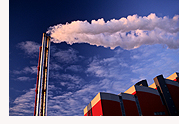|
||||||||||||||
General background – Carbon trading Central
to the Stern Review is the recommendation to set up and exploit Carbon trading.
Carbon trading is based on the idea that if a price is set on emissions
then they can be traded in the marketplace like any commodity within a framework
in which nations or individual producers must meet restrictions on the emissions.
Within a nation the total emissions is fixed e.g for particular period and
thus the individual contributors to this total can each be given an allowance
or allocation. Many countries are now embarked on emissions trading schemes
including the USA which will see its Regional Greenhouse Gas initiative
COMMENCE IN Jan 2009. Trading in essentially what are pollutants is not
new. Acid rain and smog prompted similar schemes to limit emissions of sulphur
and nitrogen oxides in the 1990’s. Central
to the Stern Review is the recommendation to set up and exploit Carbon trading.
Carbon trading is based on the idea that if a price is set on emissions
then they can be traded in the marketplace like any commodity within a framework
in which nations or individual producers must meet restrictions on the emissions.
Within a nation the total emissions is fixed e.g for particular period and
thus the individual contributors to this total can each be given an allowance
or allocation. Many countries are now embarked on emissions trading schemes
including the USA which will see its Regional Greenhouse Gas initiative
COMMENCE IN Jan 2009. Trading in essentially what are pollutants is not
new. Acid rain and smog prompted similar schemes to limit emissions of sulphur
and nitrogen oxides in the 1990’s.Trading scenarios:
|
|
|||||